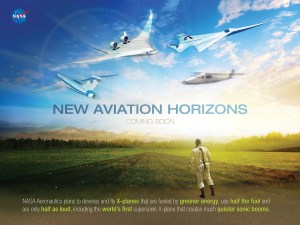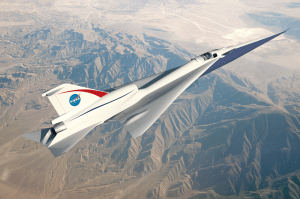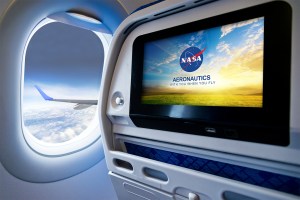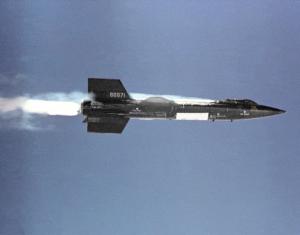NASA has announced the launch of the “New Aviation Horizons” initiative, which will lead to a new generation of X-planes that are fueled by greener energy, use half the fuel, and are half as loud as commercial aircraft in use today.
“NASA’s flight research program is on its way to creating a renaissance of an exciting era in aviation research.” Jim Banke, NASA Aeronautics Research Mission Directorate
A 10-year initiative, New Aviation Horizons is a reminder of the importance of the first “A” in NASA. Through a series of research and development investments, NASA hopes to identify new technologies that can push the commercial aviation industry forward.

NASA stated that “design-and-build will take several years with aircraft starting their flight campaign around 2020, depending on funding.”
The first contract of the initiative, awarded to a team at Lockheed Martin in February, begins work to design a quieter supersonic passenger jet. Through the 17-month $20 million award, the team is required to complete a preliminary design for Quiet Supersonic Technology (QueSST).

For over 100 years, NASA and its predecessor NACA (the National Advisory Committee for Aeronautics) have used experimental aircraft to advance aviation technology. Through government funds, the agency has reduced the expensive research and development burden on private companies and shortened the time it takes to commercialize new aviation technologies.
NASA’s “With You When You Fly” campaign reminds the public of the aeronautics advancements it has made through the years. The agency states that streamlined aircraft bodies, quieter jet engines, and drag-reducing winglets are a few of the advances NASA has brought to the commercial airline industry.

Originally known as XS-planes for eXperimental Supersonic and later shortened to simply X, the X-planes are a family of experimental aircraft intended solely for research. Over 56 X-plane concepts have been created and they represent some of the greatest strides in aviation research that NASA has made over the years.
One of the most historic X-planes was the X-1, the first high-speed aircraft built solely for aviation research, and the plane that Chuck Yeager used to break the sound barrier.

But perhaps the most notable of all the X-planes was the X-15 rocket plane. Built in the 1950s, the X-15 became the fastest and highest-flying winged aircraft of its time. During nearly 200 flights, the X-15 program gathered valuable data about high-altitude hypersonic flight.
“If we can build some of these X-planes and demonstrate some of these technologies, we expect that will make it much easier and faster for U.S. industry to pick them up and roll them out into the marketplace.” — Ed Waggoner, NASA Integrated Aviation Systems Program director
With the New Aviation Horizons initiative, NASA aims to bring to life a new generation of X-planes. This time, the focus is on advancing green aviation technology. Over the next decade or so, data gathered from QueSST – and other yet-to-be-determined X-planes – will help enable commercial aircraft to become quieter, faster, cleaner, and more fuel-efficient.






























Comment